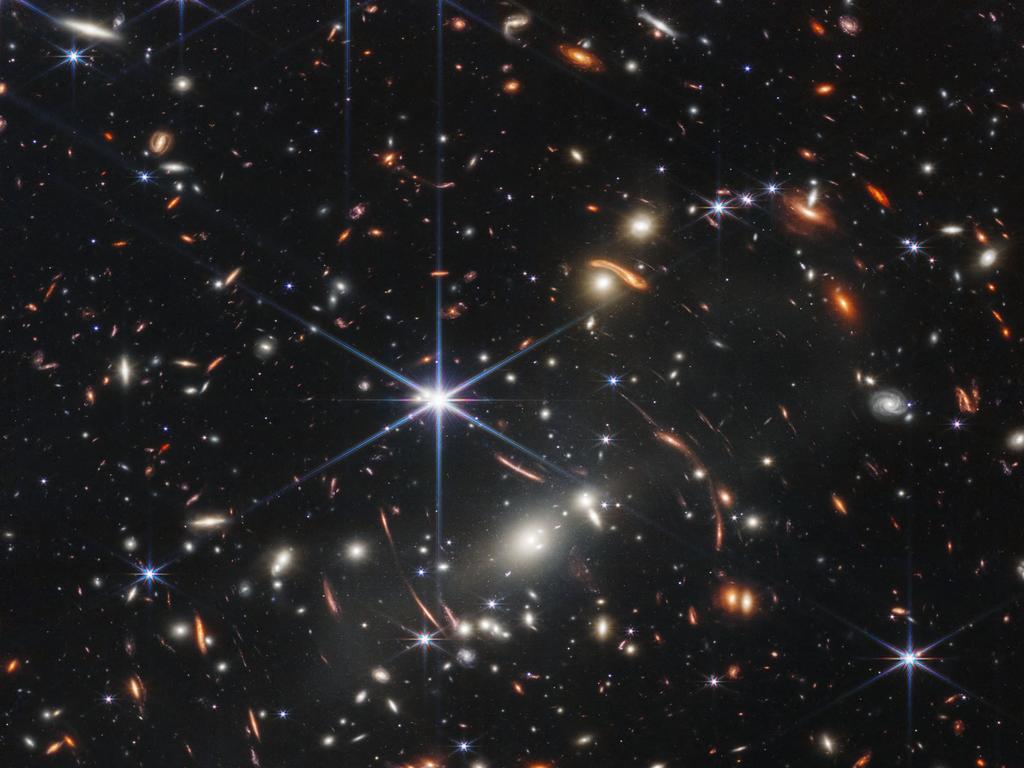James Webb telescope spots huge galaxies from soon after dawn of time
Astronomers have made a ‘bananas’ find of six mystery objects in space that cloud what scientists thought was possible about the big bang.

Astronomers have made a “bananas” discovery, finding that giant galaxies with as many stars as the Milky Way existed much sooner after the big bang than scientists thought possible.
Six mysterious objects were spotted in images taken by the James Webb Space Telescope, about one million miles from Earth, gazing into the depths of the universe to detect light that has been travelling towards us for more than 13 billion years.
Astronomers believe that the objects are galaxies that existed between 500 and 700 million years after the big bang. Galaxies from this period and even earlier have been spotted before.
However, they have always been “tiny, young, baby galaxies”, not having had enough time to grow into the colossal galaxies that began about one billion years after the birth of the universe.
Closer analysis has revealed that the young galaxies captured by the telescope contain a vast number of stars, with one holding as many as 100 billion. This is about as many as in our own galaxy, the Milky Way.

The discovery of “mature” galaxies so soon after the big bang may force cosmologists to rewrite their understanding of when and how the first galaxies formed.
“It’s bananas,” said Erica Nelson, co-author of the research and assistant professor of astrophysics at the University of Colorado Boulder. “You just don’t expect the early universe to be able to organise itself that quickly. These galaxies should not have had time to form.”
“These objects are way more massive than anyone expected,” said Joel Leja, assistant professor of astronomy and astrophysics at Pennsylvania State University, who analysed light from the galaxies.
“We expected only to find tiny, young, baby galaxies at this point in time, but we’ve discovered galaxies as mature as our own in what was previously understood to be the dawn of the universe.”
Leja said it was possible that some of the six objects may turn out to be supermassive black holes, but added: “Regardless, the amount of mass we discovered means that the known mass in stars at this period of our universe is up to 100 times greater than we had previously thought.”
He said that even if only three of the objects turned out to be galaxies “this is still an astounding change”.
The universe began with the big bang about 13.8 billion years ago. For the first 100 to 200 million years the infant universe was like a hot soup of subatomic particles in which no light could be transmitted.
Only when this started to cool could particles begin to combine into atoms of hydrogen and, later, helium. The universe’s dark age did not end until the first stars formed between 200 and 400 million years after the big bang.
The existing theory is that galaxies started as small clouds of stars and dust that gradually grew larger over hundreds of millions of years.
“The revelation that massive galaxy formation began extremely early in the history of the universe upends what many of us had thought was settled science,” Leja said. “It calls the whole picture of early galaxy formation into question.”
The James Webb telescope can detect light that has been travelling since the earliest period of galaxy formation, effectively looking back in time to the young universe. The study, published in the journal Nature, said it had detected galaxies with “stellar mass density [that is] much higher than anticipated”.
The Times







To join the conversation, please log in. Don't have an account? Register
Join the conversation, you are commenting as Logout